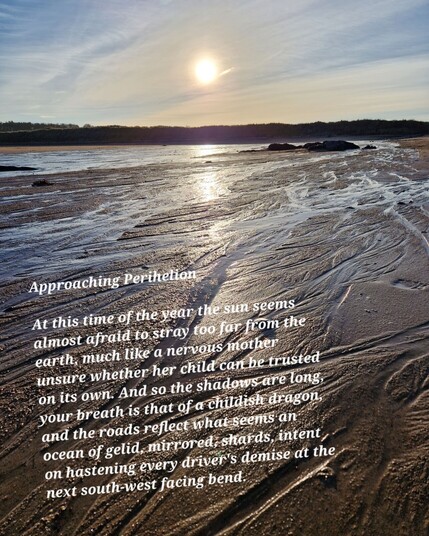Khurram Wadee ✅ · @mkwadee
1453 followers · 14124 posts · Server mastodon.org.uk#Comet C/2023 E1 ATLAS near #Perihelion
#Astronomy #Picture of the Day
#comet #Perihelion #astronomy #picture #apod #c2023e1atlas
éric 🚲 🇪🇺 :emacs: · @ericsfraga
626 followers · 642 posts · Server fediscience.orgHappy #perihelion day (with perihelion taking place a little over two hours ago now)!
Bryn Jones · @bryn00
5 followers · 35 posts · Server mas.toThe Earth is now at perihelion, its closest to the Sun in its annual orbit.
This time of perihelion refers to the time when the distance between the centre of Earth and the centre of the Sun is smallest. The time of perihelion varies by a few days from year to year because of the Moon's gravitational attraction on the Earth, and the slight motion of the Earth about the centre of mass of the Earth-Moon system as the Moon orbits the centre of mass.
Khurram Wadee ✅ · @mkwadee
1219 followers · 11654 posts · Server mastodon.org.ukToday, in about seven hours of writing this (16:17Z), the #Earth will be at #Perihelion, that is, at its closest point to the #Sun in its orbit. In accordance with Kepler’s Laws of Planetary Motion, it will also be travelling at its top speed whizzing around our star. However, the orbit is almost circular, with an eccentricity of merely 0.0167 and it’s about 1% closer to the Sun than at aphelion and so it’s easy to miss.
David Gwillam · @climbdg5
9 followers · 11 posts · Server mastodon.scotDon Stewart · @donsbot
510 followers · 158 posts · Server aus.socialBest thing today. The light levels of the near perihelion, near solstice southern sky. 5M km closer to the star than in July. You just bathe in light down here.
Thinking of my last winter in London. Not missing it.
Stones Bones & Crows · @stonesbonescrows
8 followers · 16 posts · Server mastodon.scotWintersun and a winter beach, just as fine as the summer's reach
#winter #Perihelion #prose
Khurram Wadee ✅ · @mkwadee
1034 followers · 10917 posts · Server mastodon.org.ukKhurram Wadee ✅ · @mkwadee
1034 followers · 10918 posts · Server mastodon.org.ukKhurram Wadee ✅ · @mkwadee
1034 followers · 10918 posts · Server mastodon.org.ukColin the Mathmo · @ColinTheMathmo
1818 followers · 16032 posts · Server mathstodon.xyzThe reason for the #Solstice not exactly matching the extrema of sunrise and sunset is due to #Perihelion not coinciding with #Solstice ... #Perihelion isn't until 18:32 on January 3rd, 2021 UTC.
Colin the Mathmo · @ColinTheMathmo
1818 followers · 16032 posts · Server mathstodon.xyzHappy #Solstice everyone, and warmest wishes to you all for this season between #Solstice and #Perihelion.




